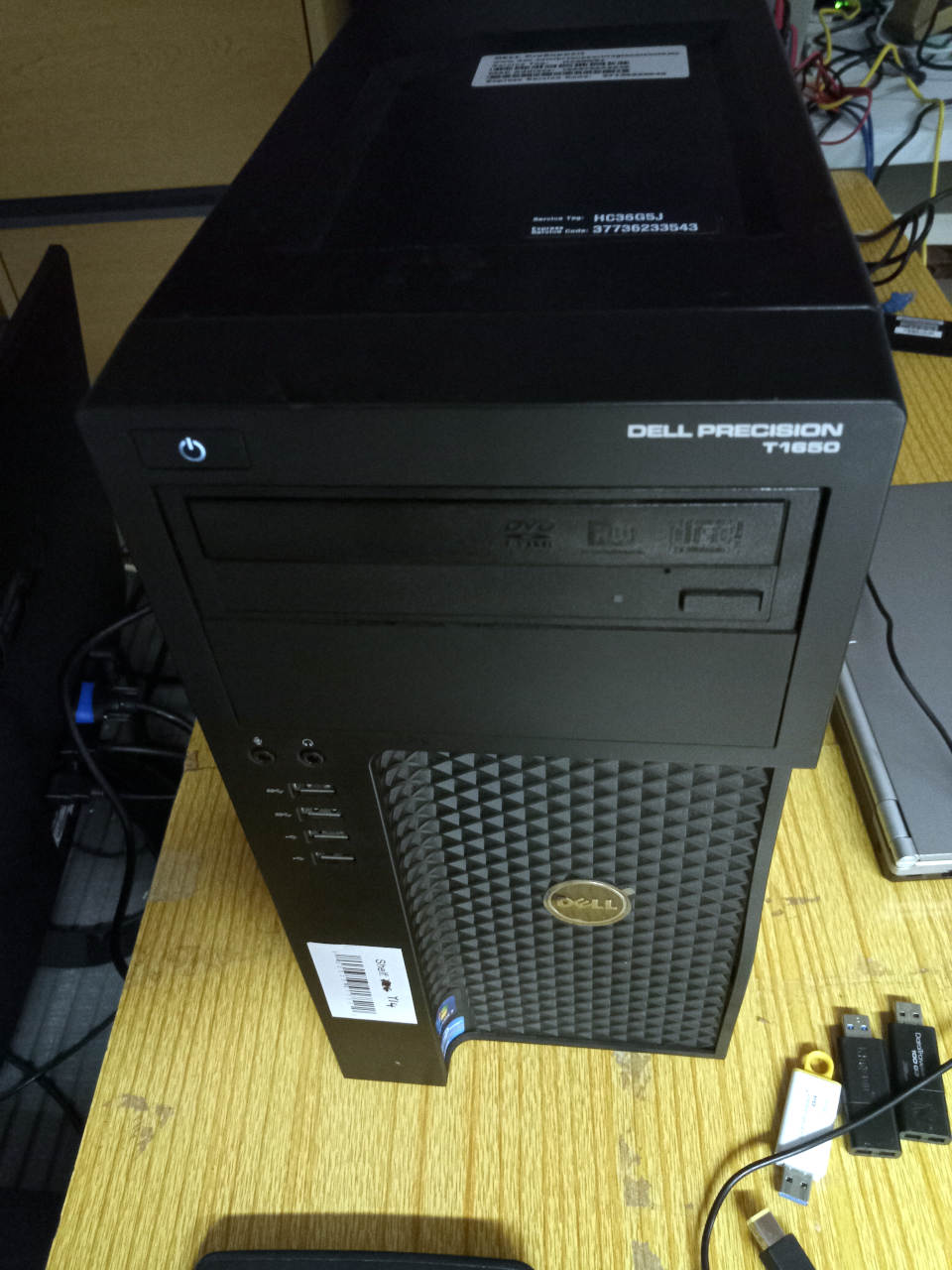

| ***Specifications*** | |
|----------------------------|------------------------------------------------|
| **Manufacturer** | Dell |
| **Name** | Precision T1650 |
| **Variants** | Precision T1650 |
| **Released** | 2012 |
| **Chipset** | Intel C216 |
| **CPU** | Intel Ivy Bridge |
| **Graphics** | Discrete graphics, or Intel HD Graphics model
depending on CPU model |
| **Memory** | DDR3 DIMMs (max 32GB, 4x8GB), ECC memory supported |
| **Architecture** | x86\_64 |
| **Original boot firmware** | Dell UEFI firmware |
| **Intel ME/AMD PSP** | Present. Can be disabled with me\_cleaner. |
| **Flash chip** | SOIC-16 and/or SOIC-8 12MiB (96Mbit) |
```
W+: Works without vendor firmware;
N: Doesn't work;
W*: Works with vendor firmware;
U: Untested;
P+: Partially works;
P*: Partially works with vendor firmware
?: UNKNOWN AT THIS TIME
```
| ***Features*** | |
|---------------------------------------------------|----|
| **Internal flashing with original boot firmware** | W* |
| **Display (if Intel GPU)** | W+ |
| **Display (discrete CPU, SeaBIOS payload only)** | W* |
| **Audio** | W+ |
| **RAM Init** | W+ |
| ***Payloads supported*** | |
|----------------------------|-----------|
| **GRUB (libgfxinit only)** | Works |
| **SeaBIOS** | Works |
| **SeaBIOS with GRUB** | Works |
Introduction
============
**Unavailable in Libreboot 20230625 or earlier. You must [compile from
source](../build/), or use at least Libreboot 20231021.**
Official information about the laptop can be found here:




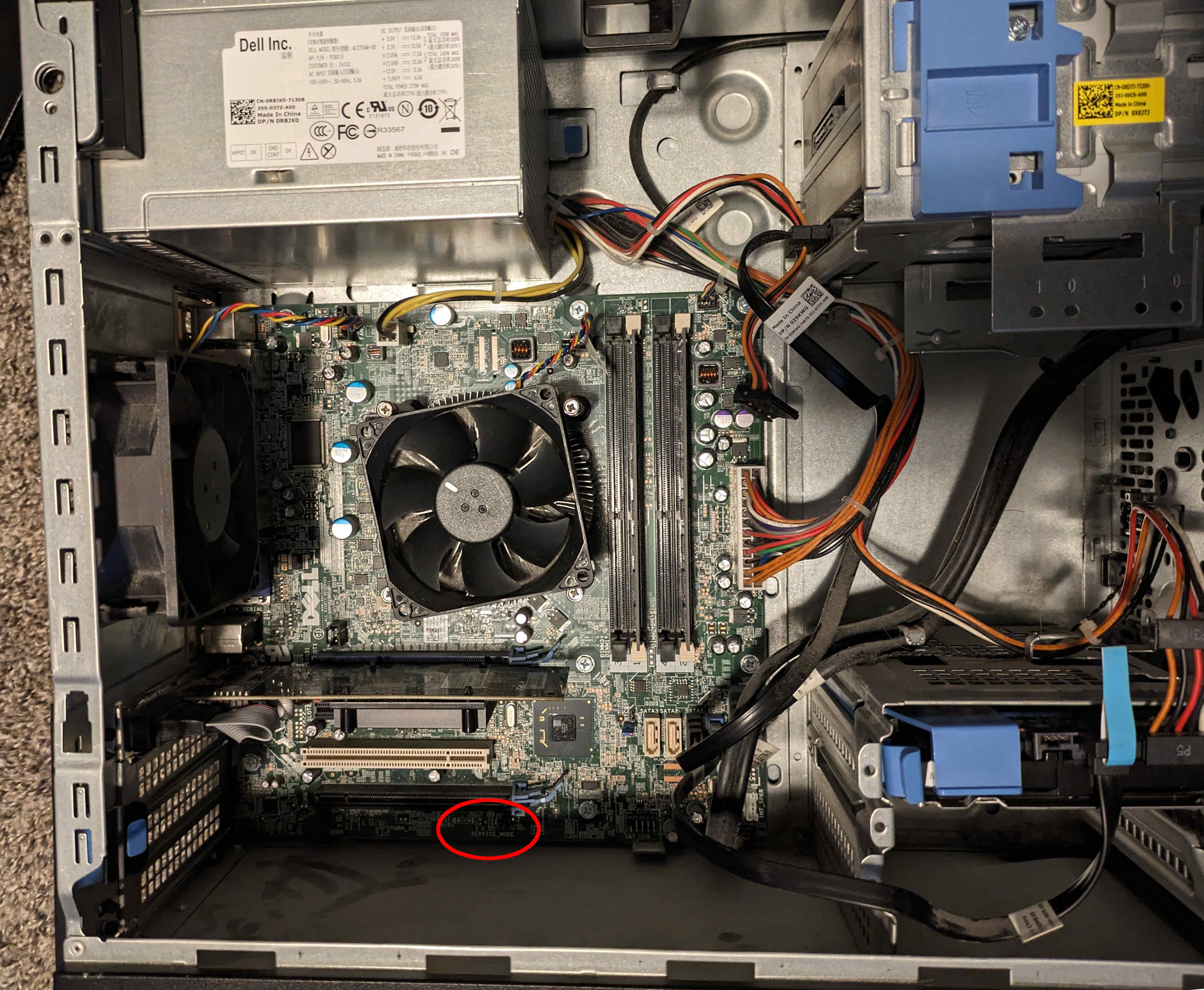
 Here is a close-up:
Here is a close-up:
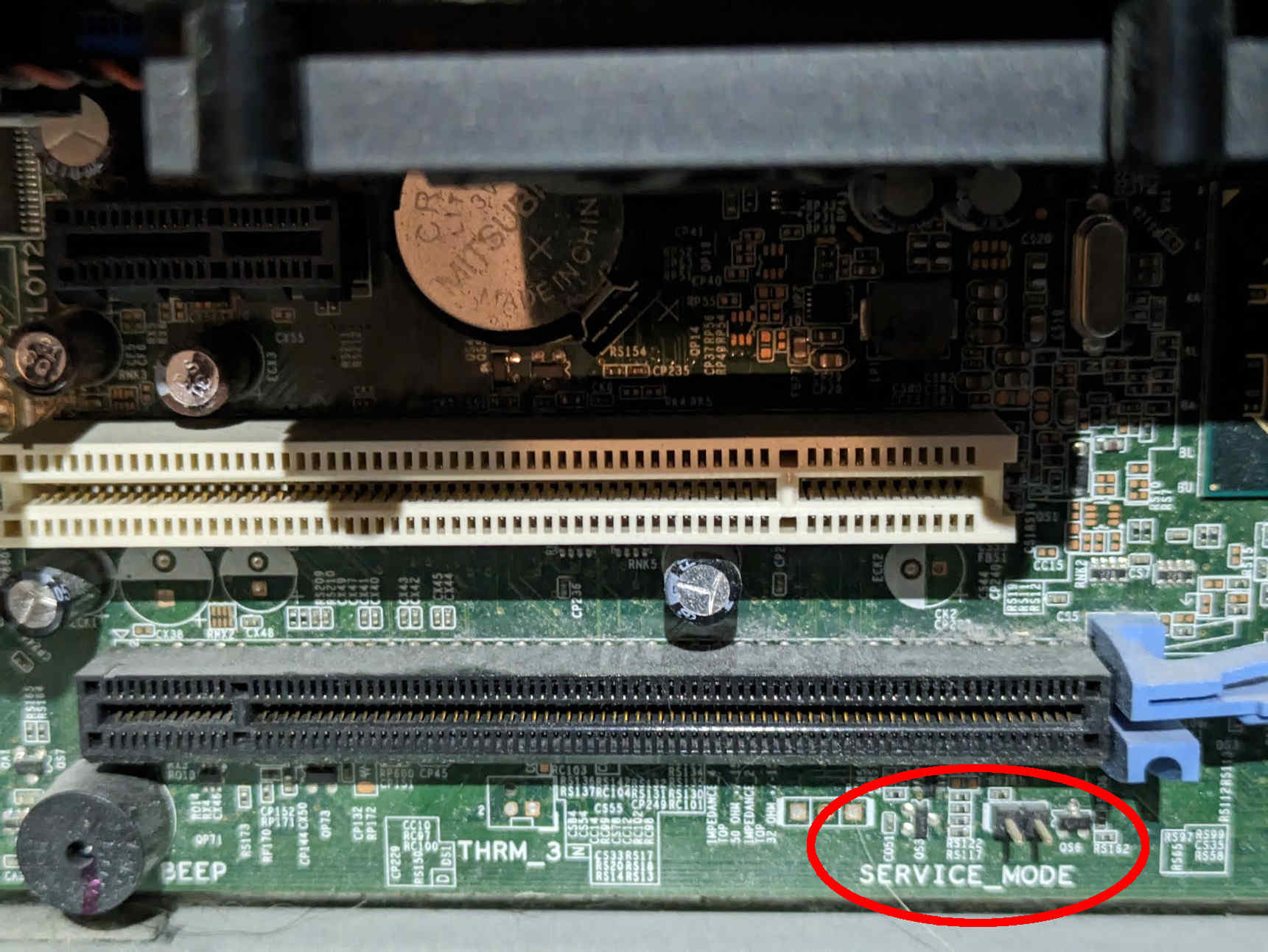
 Simply short those pins, on the header, using a jumper. When you do this, all
flash protections will be disabled.
Flash a ROM image (hardware)
-----------------
**REMOVE all power sources and connectors from the machine, before doing this.
This is to prevent short circuiting and power surges while flashing.**
For general information, please refer to [25xx NOR flash
instructions](../install/spi.md) - that page refers to use of socketed flash.
This machine is somewhat cumbersome to flash, because it has a SOIC-16 flash
for the first 8MB part, and 4MB SOIC8. You can split up your 12MB ROM image
like so:
dd if=libreboot.rom of=4mb.rom bs=1M skip=8
dd if=libreboot.rom of=8mb.rom bs=1M count=8
The side cover comes off easily, and you can find the flash ICs next to the RAM.
Here's the SOIC8 IC being flashed:
Simply short those pins, on the header, using a jumper. When you do this, all
flash protections will be disabled.
Flash a ROM image (hardware)
-----------------
**REMOVE all power sources and connectors from the machine, before doing this.
This is to prevent short circuiting and power surges while flashing.**
For general information, please refer to [25xx NOR flash
instructions](../install/spi.md) - that page refers to use of socketed flash.
This machine is somewhat cumbersome to flash, because it has a SOIC-16 flash
for the first 8MB part, and 4MB SOIC8. You can split up your 12MB ROM image
like so:
dd if=libreboot.rom of=4mb.rom bs=1M skip=8
dd if=libreboot.rom of=8mb.rom bs=1M count=8
The side cover comes off easily, and you can find the flash ICs next to the RAM.
Here's the SOIC8 IC being flashed:
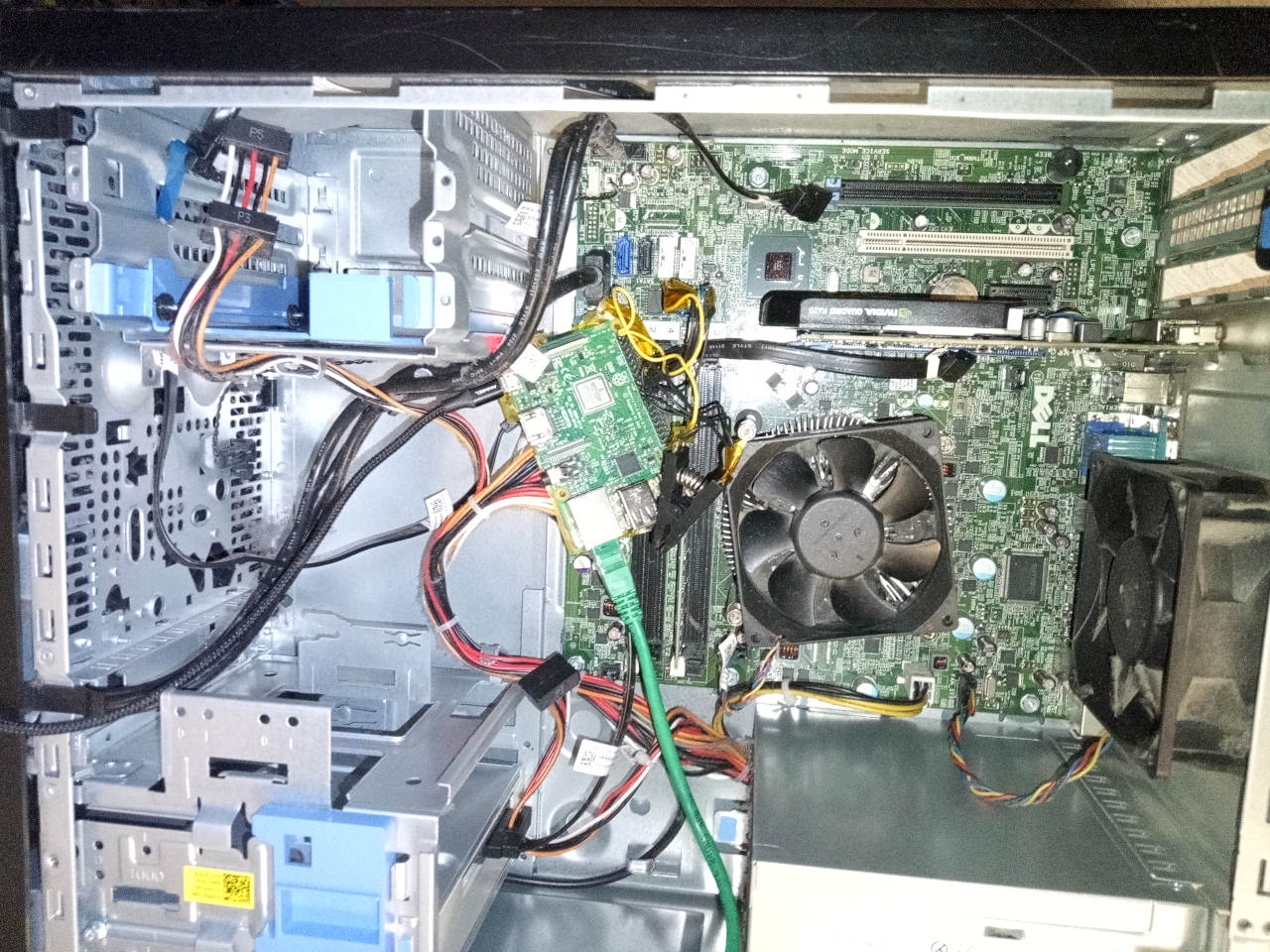
 and here is the SOIC16 IC being flashed:
and here is the SOIC16 IC being flashed:

 Here is SeaBIOS after a successful boot attempt:
Here is SeaBIOS after a successful boot attempt:
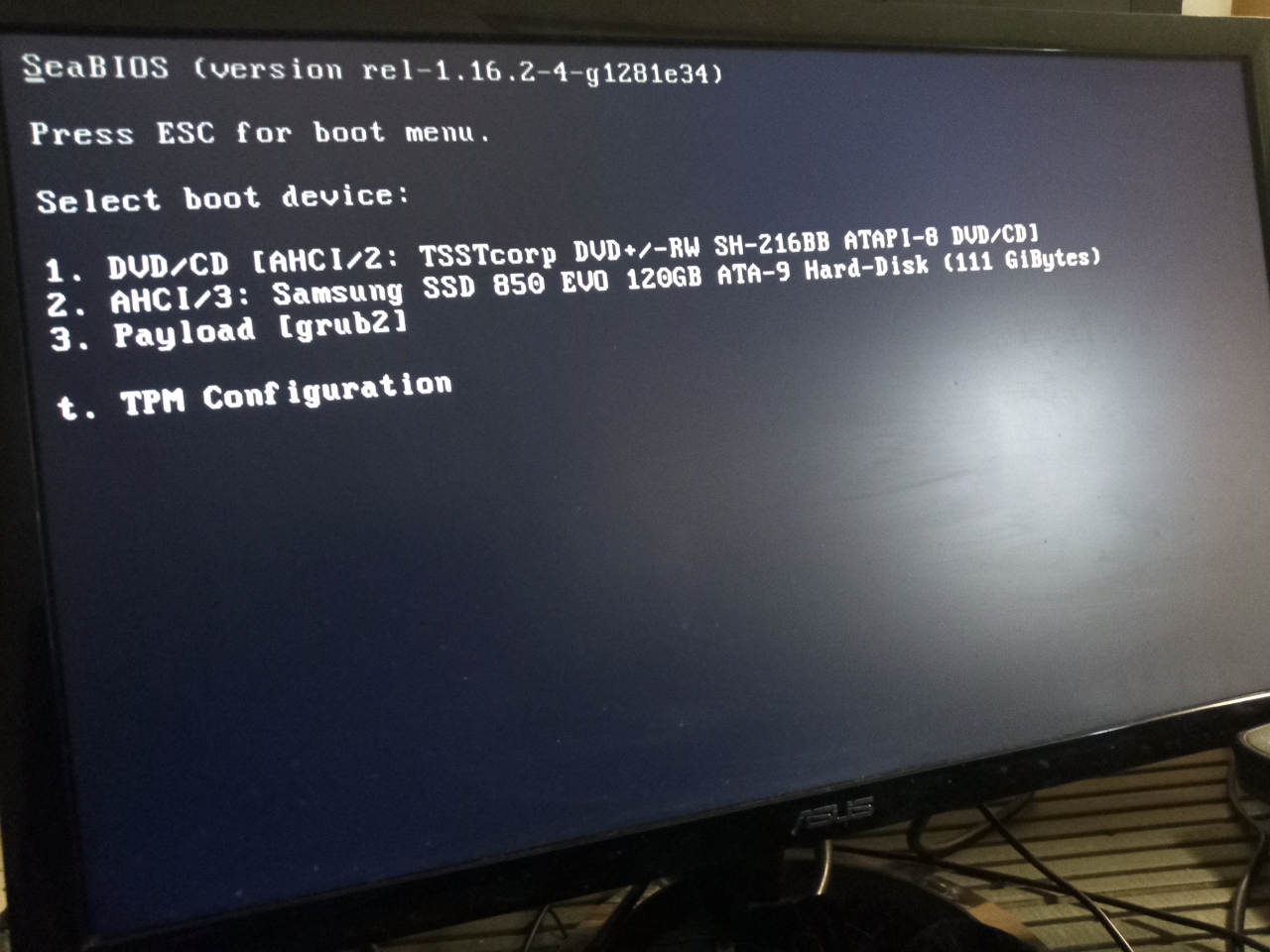
 Here is GRUB:
Here is GRUB:
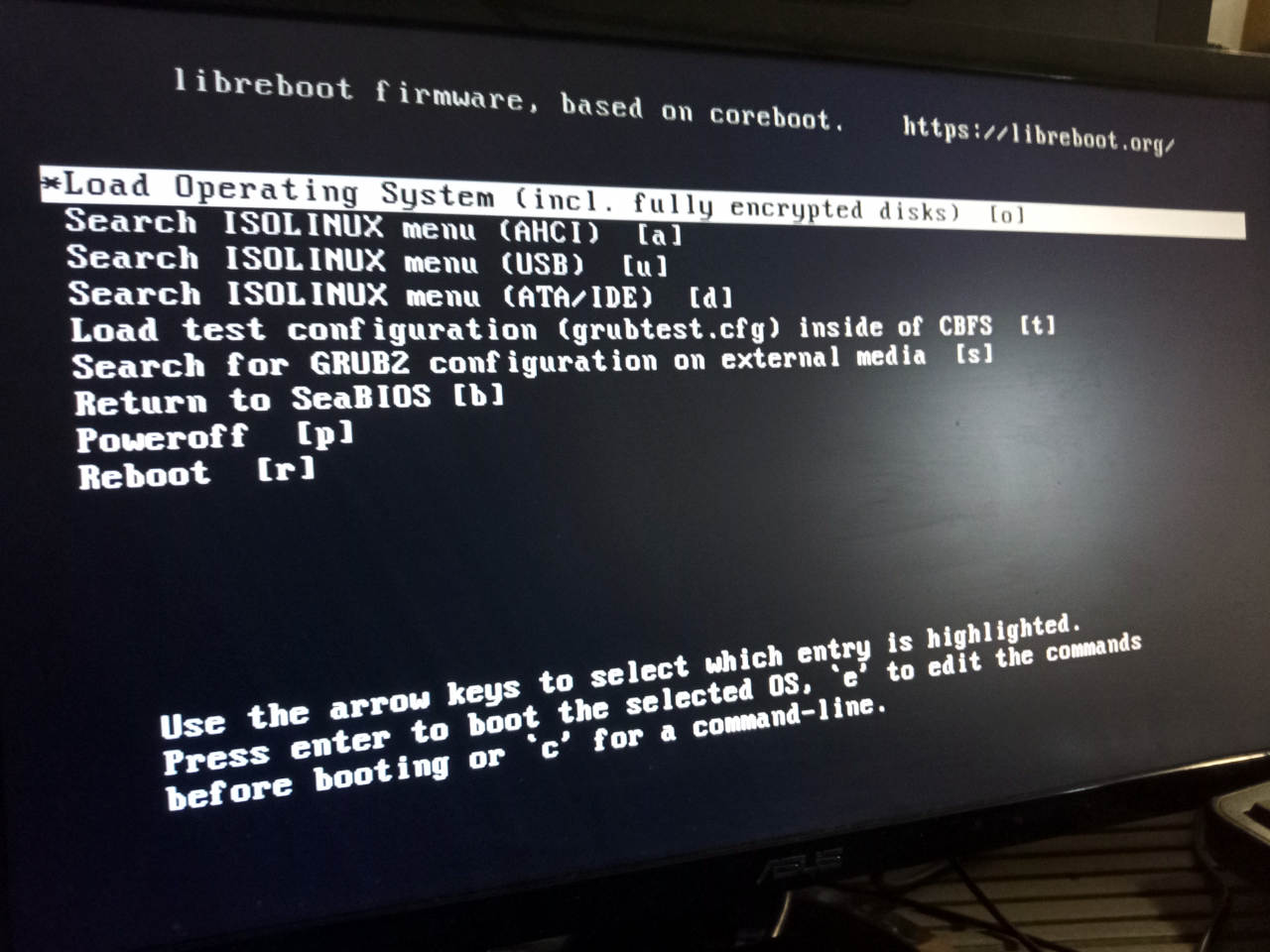
 MemTest86+:
MemTest86+:
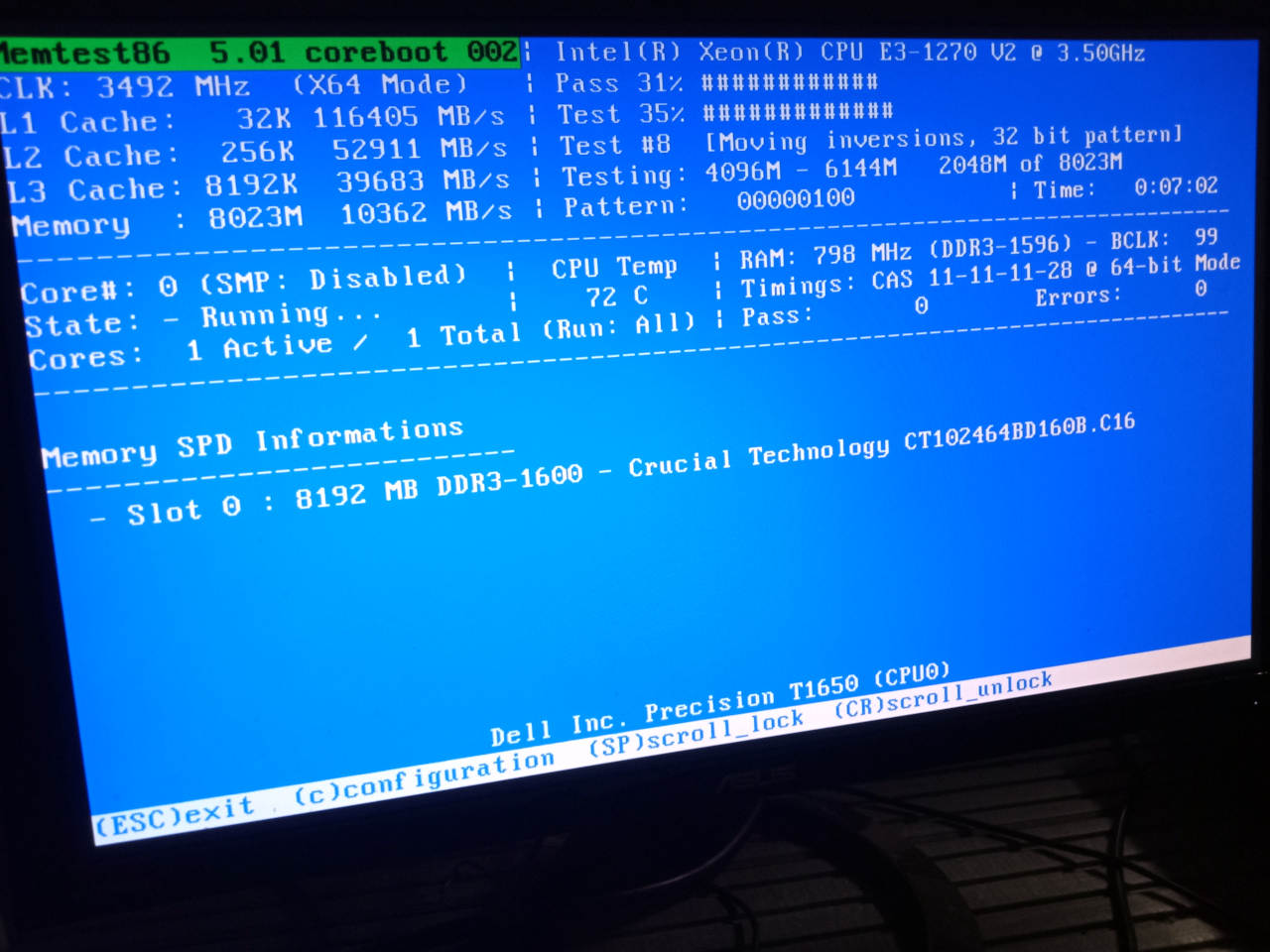
 The Debian installer:
The Debian installer:
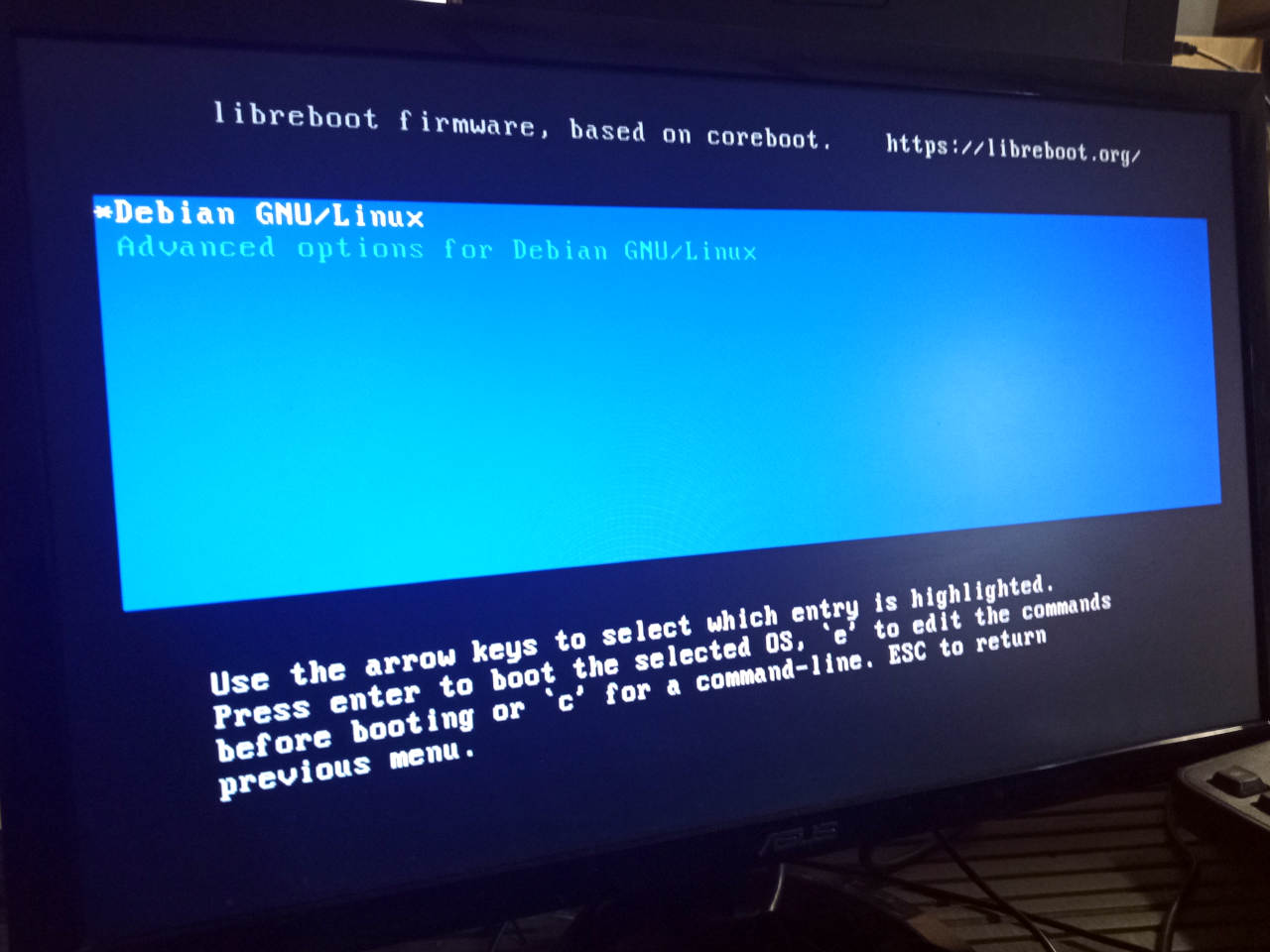
 and here is Mozilla Firefox in Debian booted on T1650, showing the Libreboot
flashing instructions [in Chinese](../install/spi.zh-cn.md):
and here is Mozilla Firefox in Debian booted on T1650, showing the Libreboot
flashing instructions [in Chinese](../install/spi.zh-cn.md):

 Other aspects of the machine are not much to write home about. It's a standard
desktop PC form factor, and you can just run whatever you want on it.
Enjoy!
Other aspects of the machine are not much to write home about. It's a standard
desktop PC form factor, and you can just run whatever you want on it.
Enjoy!